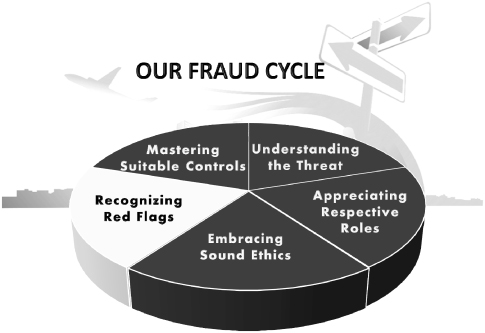15
Recognizing Red Flags
As you have seen, this book is based around a Fraud Smart cycle that covers five key aspects of helping non-specialists get to grips with fraud at work. This is repeated in Figure 15.1.
Figure 15.1 The Fraud Smart cycle.

This chapter sits within the fourth part of the Fraud Smart cycle, Recognizing Red Flags, and covers some of the actual red flags that may indicate that a fraud is happening or is likely to happen. If those in the workforce are tuned in to these red flags, they will be able to alert the right people to any suspicions they might have.
WHAT CAN GO WRONG?
If the workforce is Fraud Smart, there is a much better chance of deterring would-be fraudsters and catching those who have a go at defrauding their employer. If we fail to achieve this basic goal, much could go wrong.
We can consider how problems can arise by looking at several brief illustrative case studies taken from the UK and the USA, starting with a work experience student:
CASE STUDY
A schoolgirl who stole thousands of pounds while on work experience with a top international law firm was jailed for five months. Within three days of joining the firm she used the computer system to generate company cheques. She forged her boss’s signature and paid them into her bank account. She claimed to a probation officer that her boyfriend forced her to betray her boss, took the money she obtained ...

